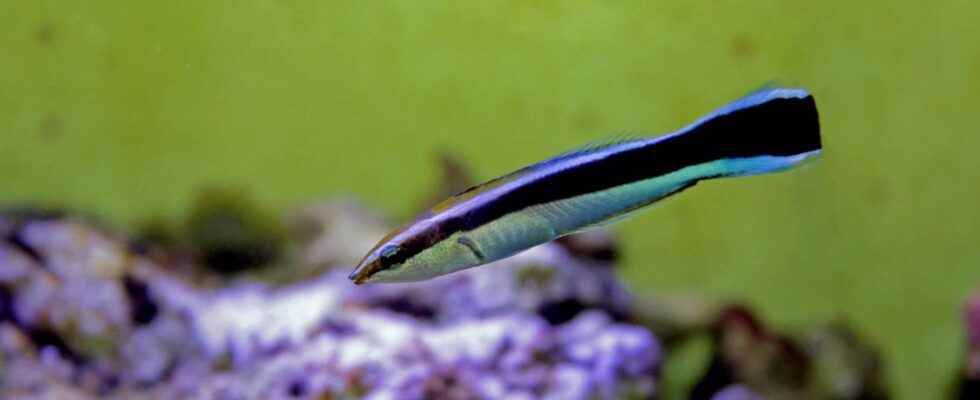You will also be interested
[EN VIDÉO] Five hypnotizing tropical fish are revealed in this top Tropical fish are known for their amazing colors and shapes. It is for this reason that they are the joy of aquarists. Futura has brought together five of the most beautiful specimens for you.
It is blue, white and… black. It measures on average about ten centimeters long. And in everyday life it calls itself the common cleaner wrasse. Because he likes to clean his swimming companions of the ectoparasites they carry on them. In reality, it’s not that much that he likes it. It’s because he has no other choice. He is what experts call a “compulsory cleaner”. Understand that in order to survive, he has to clean up other fish.
The common cleaner wrasse is a tropical fish. It is found mainly on the side of the Great Barrier Reef. Also in the Red Sea. Or even in the Indonesian seas. There he is able to clean more than 2,000 fish per day. And unfortunately for him, some of his “customers” sometimes confuse him with fish from the blenny family that look a lot like them. The problem is that these fish are not nice cleaners, but rippers of skin, fins and scales. If you know what I mean…
Definitely a funny fish, this common cleaner wrasse. Because he is born female and as he grows up he sex change to become male. Of the’hermaphroditism successive protogynous type, say scientists. But also, and perhaps above all, because he was the first of the fish to pass the test of mirror.
The mirror test passed by a fish?
the mirror test, let us remember, was imagined in the 1970s by an American psychologist, Gordon Gallup. Its objective: to determine which species are endowed with self-awareness. The test is simple. At first glance. Make a colored spot on the forehead of an animal and then place it in front of a mirror. If the animal reacts by wanting, for example, to remove this spot from its forehead, it is because it understands that the image it has in front of it corresponds to its own image. Among the animals that passed this test:asian elephantthe pig, the gorilla or the dolphin.
Regarding the common cleaner wrasse, researchers observed this astonishing behavior a few years ago. Fish dancing in front of the mirrors that lined the walls of their aquarium. And who, once the colored stain affixed to their throat, spent a lot of time observing said mirrors. Even tried to erase the stains by clearing their throats several times. Because they just confused them with the ectoparasites they like to collect from the back of their fish buddies, then mocked some scientists.
new evidence
So the researchers continued their work to confirm — or invalidate — their hypothesis. They first placed common cleaner wrasses in two adjacent tanks. They then marked their throat. And none scratched in response. Enough to prove that a visual stimulus on another fish is not enough to provoke the reaction observed in common cleaner wrasses placed in front of a mirror.
To understand the other verification carried out by the researchers, remember that the animals tested must first be familiarized with the presence of the mirror. The process takes place in three stages. During the first stage, the animal placed in the presence of a mirror is aggressive. For him, the mirror is another animal. In the second stage, the aggression dissipates, but the animal retains an unnatural behavior which shows that it has understood that the mirror is not another animal. In the third stage, finally, the animal discovers its body in the mirror by observing it attentively. Then it’s time to mark his forehead — or some other part of his body that he can only see in the mirror.
But everything can go wrong just by moving the mirror. Aggressive behavior then reappears in animals that have not linked the mirror to their own image. The cleaner wrasse, on the other hand, seems to keep its calm when the mirror changes sides. Further proof, according to the researchers, that this little fish which does not look like much has self-awareness. That he’s… not so stupid. Or, that the validity of the mirror test needs to be reviewed.
Support your independent scientific media: discover our subscription formulas!
4 good reasons to subscribe to Futura on Patreon:
- A site without any advertising from 3.29 euros per month.
- It is without commitment.
- Access to priority content, in preview, just for you.
- You support our business in the best possible way. A real motivation for us!
Interested in what you just read?
